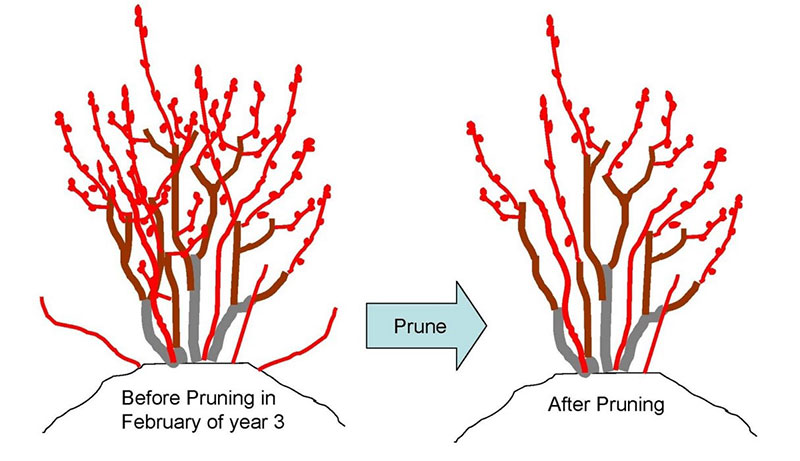By Bill Cline, Entomology & Plant Pathology Department, NCSU (Revised 8dec21)
Cultivated blueberries are upright, deciduous, woody perennials, forming multi-stemmed bushes with maximum unpruned heights varying from 6-8 feet (highbush, southern highbush) to 10-15 feet (rabbiteye). All cultivated species require annual pruning to manage bush height and shape. Pruning also prevents over-cropping, increases berry size, and removes dead, diseased or insect-infested wood.
Pruning is second only to hand harvest in terms of annual labor expense. So how is pruning accomplished quickly and economically, and what is the easiest way to explain pruning goals to a crew of workers entering the field for the first time? The following teachable steps, in order, can be used at each bush to rapidly eliminate undesirable growth, selecting for flexible, upright, and productive canes.
Tools and Techniques
Most blueberry pruning is done during the dormant (winter) season after the leaves have fallen. Mature canes can be up to two inches in diameter, so long-handled loppers capable of cutting large stems are essential. Smaller one-handed pruners are used for finish work and for shaping young bushes. Make flush cuts to avoid leaving stubs. Pruning cuts are not treated, though some authorities recommend timing standard fungicide sprays to occur immediately after pruning, especially when late spring and summer cuts are made on actively-growing bushes.
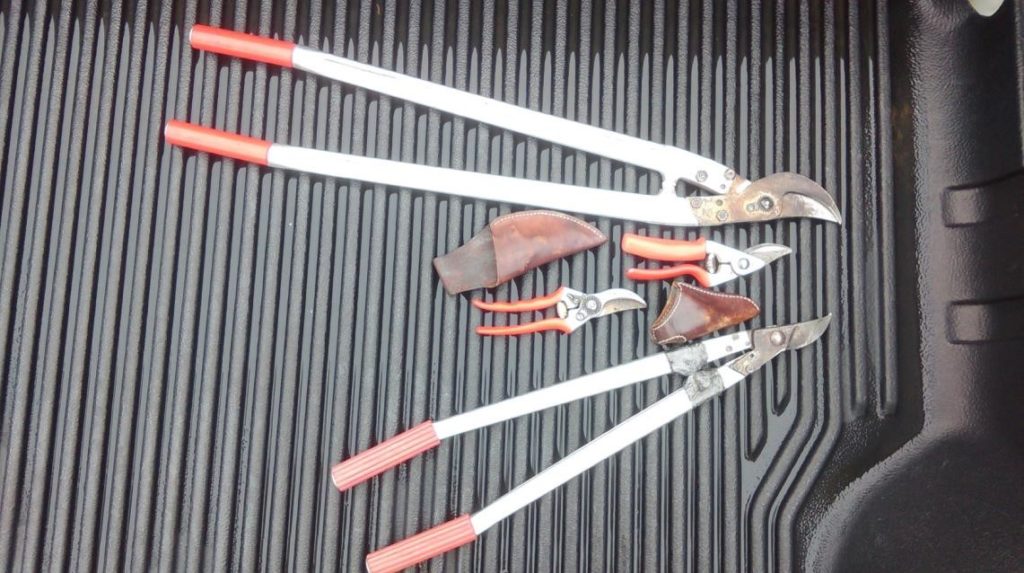
Steps in Winter Pruning (November – March)
STEP ONE: Define the crown. Pruning starts at the ground, not at the top of the bush. Visualize a circle 12 to 18 inches in diameter around the crown of the bush, and remove ALL shoots of any age that have emerged from the ground outside the circle. This narrows the base of the bush to facilitate machine harvest, but is also a good general step for hand-harvested fields as well.
STEP TWO: Remove low-angled canes and crossovers. Low-angled canes that are too close to the ground are undesirable because the fruit is more likely to contact the ground, or to be contaminated by rain-splashed soil. Remove these low-lying branches, and also any canes that angle through the bush (crossovers). What remains is a narrower bush consisting of the most upright canes.
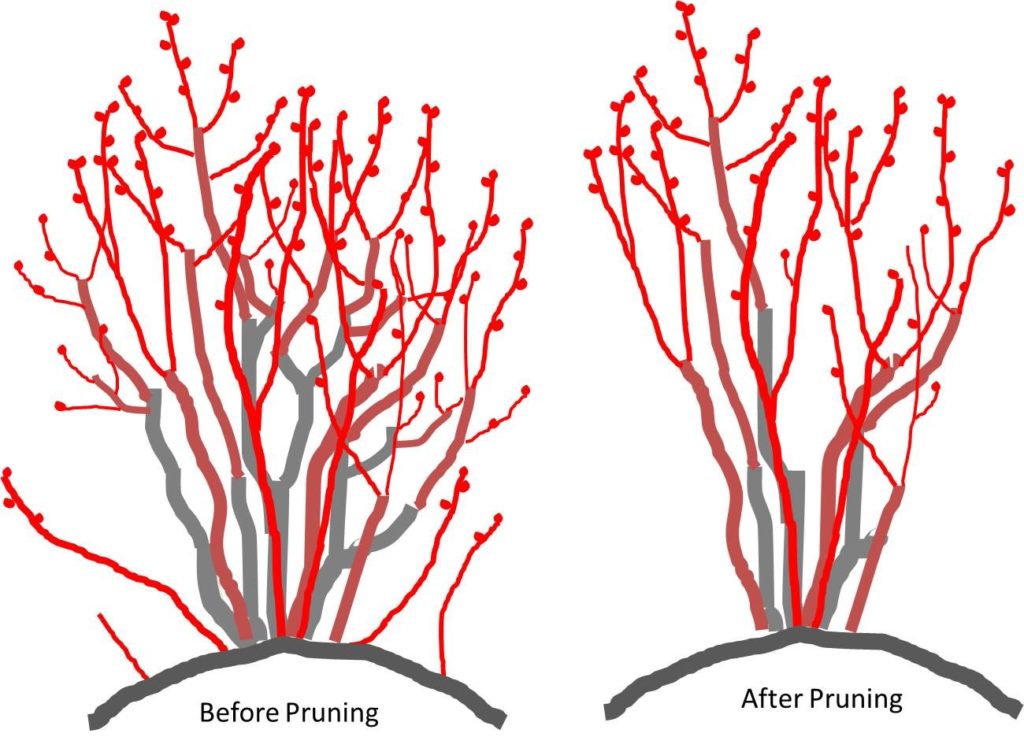
STEP THREE: Open the center. If needed, remove one to three large canes from the center of the bush to reduce crowding, improve air circulation and phase out older canes. Old canes to target for removal are larger and grayer in color, and are more likely to be covered with a fuzzy growth of foliose lichens. The goal should be to move through the field rapidly by making large cuts close to the ground.
STEP FOUR: Thinning and heading back. As a blueberry cane ages, it branches repeatedly, resulting in smaller and smaller diameter lateral twigs in successive years. If left unpruned, this results in excessive numbers of unproductive, matchstick-sized shoots, each with a few tiny berries. To avoid reaching this stage, thin canes by making cuts to selectively remove clumps of twiggy, brushy-looking, matchstick-sized laterals. At this time also cut (head back) any long whips or canes that are too tall.
About Flower buds
Yield reduction via flower bud removal always occurs when winter pruning is done properly. This is often a sore subject with growers who are trying to maximize yields. Flower buds are readily visible during winter pruning, and it is tempting to leave too many. This is a mistake! Expect to remove at least a third of the flower buds during pruning. Why? Because overloading the bush with fruit in one year will stress the plant and cause reduced yields in following years and will eventually require even more severe pruning to bring the bush back into production.
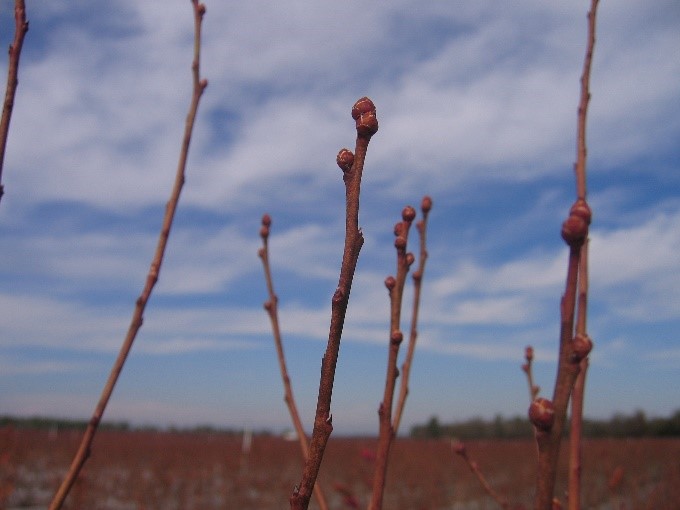
Conclusion
These basic hand-pruning steps can be used with any blueberry bush. Every cultivar has a slightly different growth habit, and only experience will tell you how to manage each. Some cultivars produce too many new shoots from the ground and require a lot of thinning, while others are less prone to sprouting. Your goal should be to have a multi-trunked bush with strong canes of all different ages emerging from the ground, so that as each older cane is removed, a younger cane is already there to replace it.
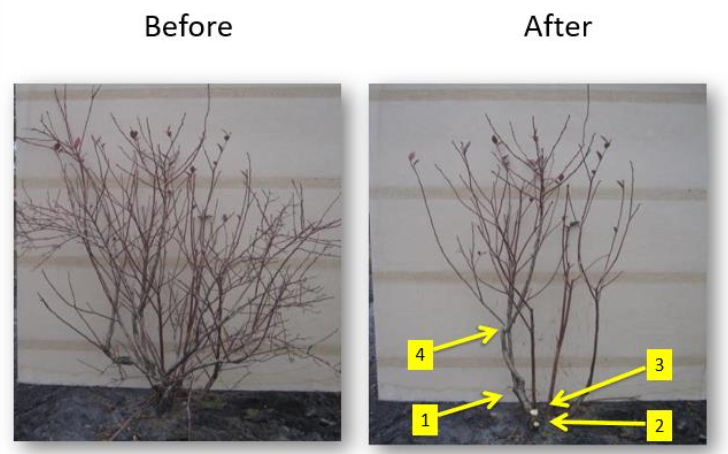
Pruning Young Blueberry Plants
Young blueberry bushes are usually planted in late winter while fully dormant and leafless.In North Carolina, this translates to February or early March. During the first year, flower buds are removed by pruning, or by stripping off flowers by hand after the blooms emerge.In subsequent years, flower buds must be thinned to prevent overcropping and to promote the vegetative growth so vital to the establishment of a full-sized bush.
The diagrams below show growth of a single blueberry bush for the first three years, with “before” and “after” pruning comparisons each February.
Setting out new plants
Always prune or rub off all flower buds and cut back 1/2 to 2/3 of the height at the time of planting. For potted plants, gently separate and spread out the roots so that the root mass is no longer in the shape of a pot.
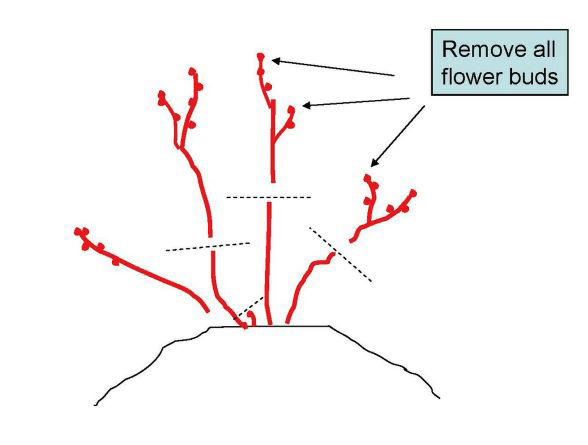
In Year One
The goal is to avoid fruit production entirely. With removal of all flower buds at the beginning of year one, the bush grows vegetatively, and by Fall of the first year has increased in size and produced more flower buds.
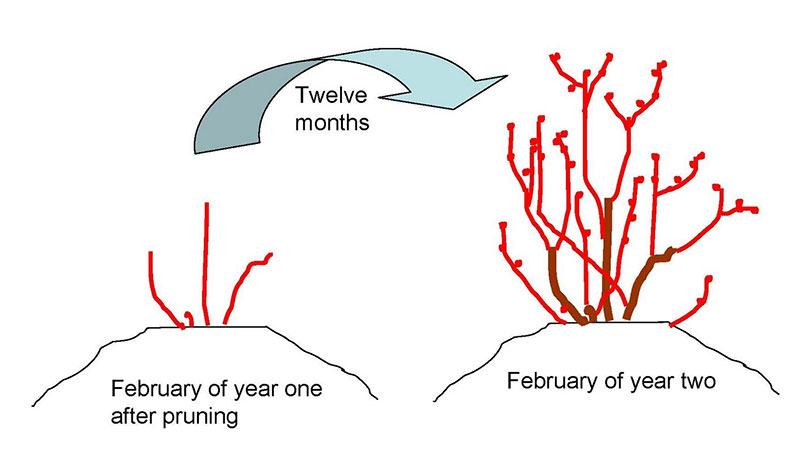
Young bushes
In year two, remove low-lying or weak shoots and cross-overs, keeping the healthiest, large upright canes. Some flower buds may be allowed to produce fruit in year two if the bush grew vigorously in year one.
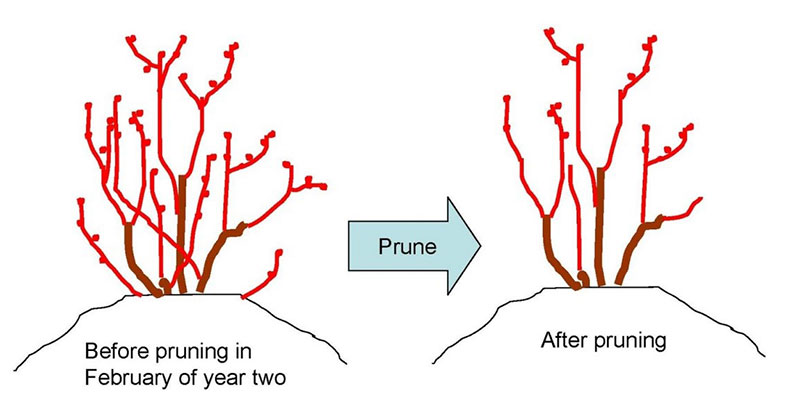
First crop?
The bush may be allowed to produce a few berries in year two, however the goal is still to promote vegetative growth that will build the structure of the bush for years to come.
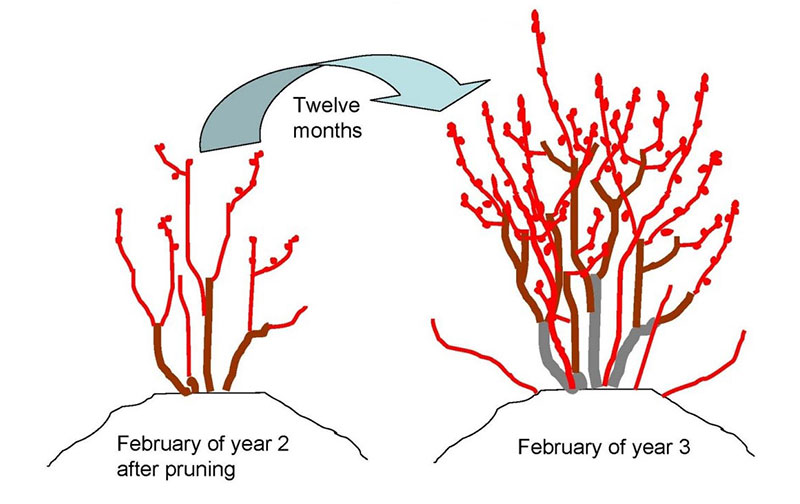
Year Three
The bush is well established and capable of producing a significant crop. However, routine pruning should still remove to to 50 percent of the flower buds. Begin selecting new basal shoots that will replace older canes.
